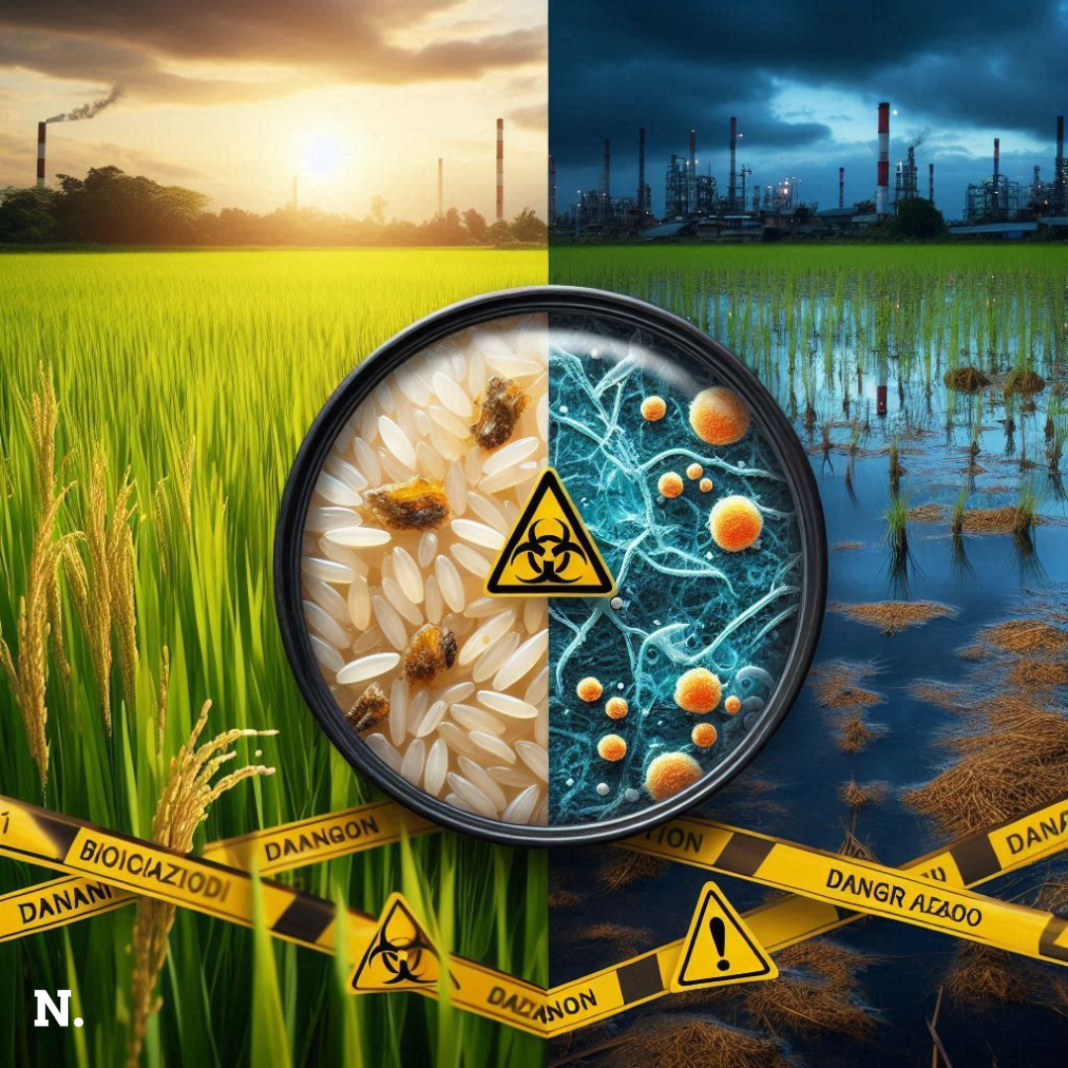Rising Temperatures Are Making Rice More Dangerous
Climate change is not just about hotter days or rising sea levels—it’s now making our food more dangerous. According to a recent study, rice, a food eaten daily by billions, is becoming more harmful because of increasing arsenic levels. Scientists have found that as the Earth gets warmer—specifically by around 2 degrees Celsius—rice plants will start to absorb more arsenic from the soil and water they grow in.
Arsenic is a toxic substance. Even in small amounts, it can cause serious health problems like cancer, heart disease, and diabetes. Normally, rice already contains small amounts of arsenic. But with rising global temperatures and more carbon dioxide in the air, rice plants change in a way that lets them soak up even more arsenic from the soil.
This happens because higher temperatures and more carbon dioxide affect the structure of the soil and the rice plant. As a result, the plant’s roots become more efficient at pulling arsenic from the environment. The rice we eat may then carry higher levels of this harmful chemical.
A Huge Problem for Countries That Rely on Rice
Rice is a staple food around the world. Farmers produce about 540 million metric tonnes of rice each year. Indian farmers alone grow 27% of the world’s rice. Many people in Asia eat rice in nearly every meal. But now, this food, long considered safe and basic, may be putting people at serious health risk.
The report warns that by the year 2050, one out of every five people in the world could get cancer. A big reason for this increase is the rising amount of arsenic in food, especially rice. Countries like China, India, and many others in Southeast Asia could be the most affected because rice is such a big part of their daily diet.
How Cyber Attacks on Industrial Control Systems Can Endanger Lives ?
In China alone, it is estimated that the rise in arsenic levels due to climate change could cause around 19.3 million new cancer cases by 2050. This includes serious cancers like lung and prostate cancer. The risk isn’t just limited to cancer—health problems like heart disease and diabetes may also become more common.
What makes things worse is that cooking rice in arsenic-contaminated water only increases the amount of arsenic we end up eating. In many places, the water used for irrigation and cooking is already polluted, which adds to the problem.
What Scientists Discovered Through Testing
To understand how serious this issue is, researchers carried out a long-term study. Over ten years, they grew 28 different kinds of rice plants at four locations in China. These were special test areas designed to simulate the future climate—with higher temperatures and more carbon dioxide in the air.
The results were alarming. Every time the carbon dioxide and temperature levels increased, the arsenic levels in the rice also went up. Even though different rice types responded differently, the overall trend showed a clear rise in arsenic content.
Cyber Attacks on Connected Cars
This means that as climate change continues, the danger from eating rice is likely to grow. Scientists also found that even when the arsenic levels in soil weren’t very high, the plants still absorbed more arsenic simply because of the warmer climate and increased carbon dioxide. This shows that the problem is not just with the soil or water, but with how the plants themselves behave in a changing environment.
The report also notes that arsenic accumulates in the soil over time, especially in paddy fields where farmers grow rice in water. If the water or soil is already contaminated, the rice plants continue to absorb more arsenic year after year.





